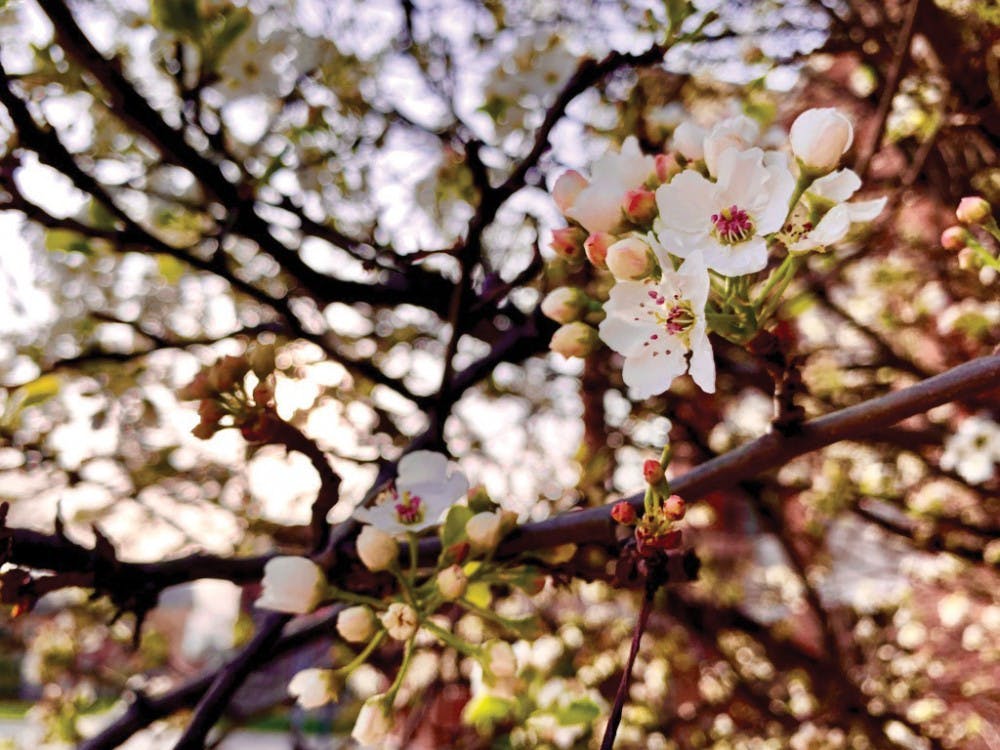While budding blooms decorate campus for graduation, some trees have a stench that’s caused Ball State students to comment.
They smell “terrible,” like “rotting fish and trash,” said Adam Fox, senior computer science major. He said the scent even messes with his allergies.
Emma Yanus, sophomore dance and theater major, said the tree’s aroma reminds her of burning plastic.
These “rotting fish” smells come from Callery pear trees scattered across Ball State’s campus.
The white-flowering, single-stem trees come from a tree species scientifically known as Pyrus calleryana.
There are four cultivated varieties of Pyrus calleryana spread throughout campus, said Michael Planton, associate director for landscape and environmental management.
Around 115 of Aristocrat, Silver Ball, Redspire and Cleveland Select flowering pear trees decorate campus. They comprise 1.6 percent of the total campus forest, Planton said.
The most common flowering pears on campus are called Pyrus calleryana — Redspire. Students often run into these white blossoms outside of the Atrium, he said.
“They have great spring flowers and excellent reddish fall color, ” Planton said. “But they really don’t smell that well.”
The scent of Callery pears stems from their desire to attract pollinators, said David LeBlanc, professor of biology.
In early spring, flies are the main bug around to pollinate, LeBlanc said. Rotting smells attract these insects, so the tree produces a “stinky” and “rotten” odor.
Callery pear trees are known for more than just their smell, however. LeBlanc said the trees are an invasive species.
“[Ball State] likes to have flowering trees around campus to make it look nice,” LeBlanc said. “I wouldn’t have one in my yard.”
An invasive plant is a non-native plant that takes over landscapes aggressively, he said. Invasive species easily spread beyond where they are planted.
Callery pears produce clusters of seed-filled berries, which birds eat, fly away, and poop out the seeds in new areas, he said.
The tree, native to China, was introduced into the United States in 1908, according to U.S. Forest Service. However, over the years, the non-native trees to become an increasing “problem” for Indiana and other states, he said.
Twenty-five states carry this invasive plant, according to an article from BioOne Complete, a scientific database.
In Indiana, Callery pears crowd out native trees, according to an Indiana Department of Natural Resources (DNR) press release.
Indiana DNR encourages homeowners and landscapers to avoid planting these trees and to replace them when possible. Alternative flowering trees that can be planted in Indiana include serviceberry trees and eastern redbuds.
But to students like junior accounting major Savannah Bassett, the trees’ smell remains the primary concern.
“They just smell weird,” said Savannah Bassett, junior accounting major. “It would be inappropriate to say what they smell like out loud.”
Contact Liz Rieth with comments at ejrieth@bsu.edu or on Twitter @liz_rieth.





